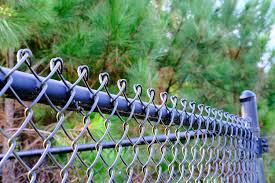
Boundary Bonds: Exploring Connections Through Fences
Beyond their sensible energy, fences keep powerful symbolic importance in human being communities, representing ideas of acquisition, identity, and social limitations. As actual physical manifestations of limitations, fences shape our perceptions of space and impact our connections with all the created atmosphere. Let’s look into the symbolic significance of fences (ploty) and understand why these are more than just structures—they are emblems of man culture and modern society.
1. Management and Territory:
Fences symbolize management and territorial borders, marking where one particular residence comes to an end and another starts. By understanding boundaries, fences set up feelings of possession and control over territory, strengthening individual or combined personality. In agricultural options, fences delineate career fields and pastures, signifying ownership of land and solutions. In the same manner, in urban environments, fences demarcate private house from community space, asserting acquisition and exclusivity.
2. Social Division and Exclusion:
fences (ploty) may also represent social divisions and exclusions within modern society. Great wall surfaces and limitations may symbolize divorce and inequality, creating physical limitations that break down neighborhoods based upon socio-monetary status or some other elements. However, fences with open up gates and lower wall space represent inclusivity and interconnection, welcoming connections and cultivating feelings of neighborhood. The design and presence of fences mirror root sociable dynamics and strength components.
3. Societal Identification:
In many cultures, fences keep deep ethnic relevance and are imbued with meaning that displays cultural values and customs. As an example, in a few countries, ornate fences are signs of standing and prestige, featuring money and wealth. In comparison, in other civilizations, easy and efficient fences may be highly valued for his or her practicality and utilitarianism. Learning the cultural context of fences helps us appreciate their symbolic value in several communities.
4. Mental Boundaries:
Fences also can stand for mental health boundaries that define private space and autonomy. By developing actual limitations, fences provide people with feelings of safety and personal privacy, letting them establish limitations and manage access to their personal area. This sense of limit management is important for maintaining emotional well-being and interpersonal interactions, mainly because it allows visitors to assert their autonomy and safeguard their private restrictions.
5. Environmental Affect:
The proliferation of fences has enviromentally friendly ramifications, especially in organic scenery and wild animals environments. Substantial fencing can fragment habitats and affect wild animals corridors, having an effect on biodiversity and ecosystem wellness. Even so, eco-friendly fencing options, including animals-warm and friendly models and permeable obstacles, offer you options that equilibrium human being demands with ecological conservation. By minimizing their environmental footprint, fences can bring about the preservation of organic landscapes and animals habitats.
In conclusion, fences are not just actual constructions they can be emblems that signify sophisticated sociable, societal, and mental health dynamics. As guardians of limitations, fences condition human being interactions and panoramas, reflecting and reinforcing social ideals and norms. Admiring the symbolic significance of fences improves our knowledge of the constructed atmosphere and our connection with all the terrain.